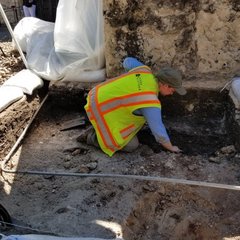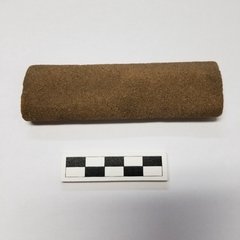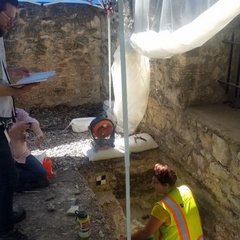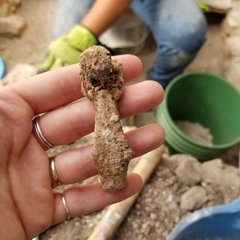Archaeological excavations associated with the preservation work for the Church and the Long Barrack continued with two new excavation units opened. One excavation unit was placed along the south end of the Long Barrack, on the east side of the arcade wall. The other excavation unit was placed just north of the reconstructed portion of the north wall of the sacristy.
From the previous weeks, excavations in the unit placed along the north wall of the Long Barrack resumed during the week. The structural engineer from the project team was able to assess the condition of the wall and gave guidance to the archaeologists on how to proceed. There was a small delay to restarting earlier in the week due to some wet conditions in the unit. Some water from one of the weekend rainstorms had seeped into the north part of the unit, away from the wall foundation, causing some muddy conditions. The archaeologists had to allow for some time to dry out.






